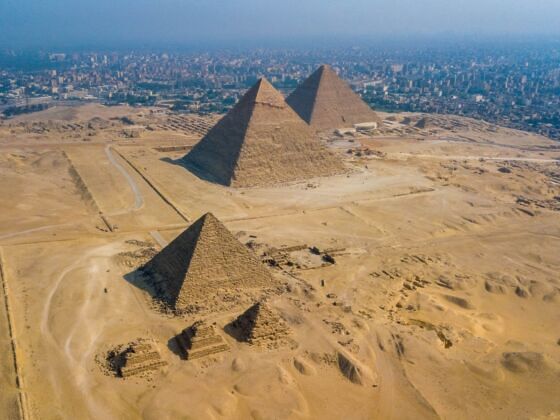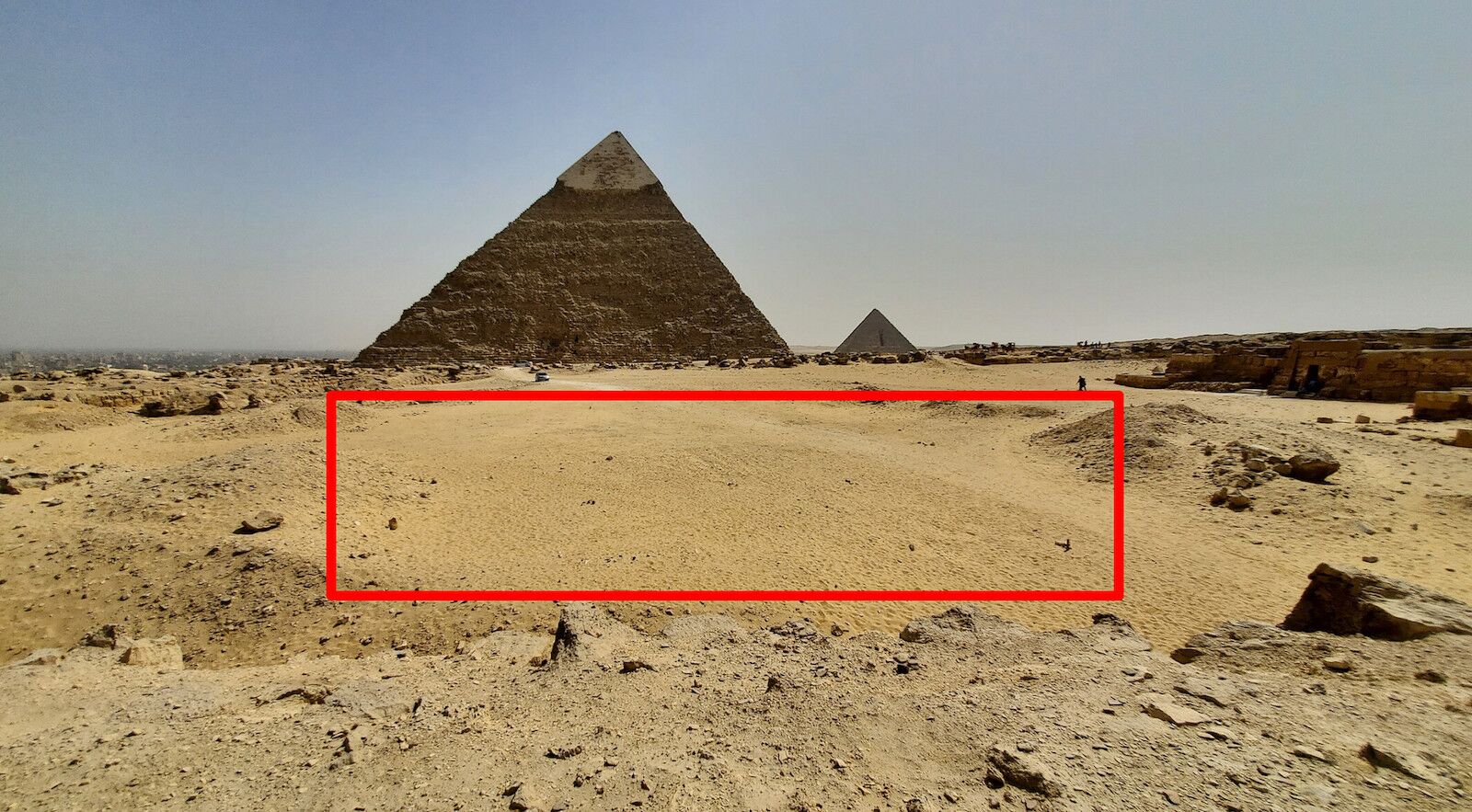The Great Pyramids of Giza, known for the three monumental tombs for Pharaohs Khufu, Khafre, and Menkaure, are the enduring symbols of ancient Egypt’s power and engineering prowess. They’re also the oldest of the Seven Wonders of the Ancient World, and one of the most recognizable and famous sites in the world, attracting nearly 15 million visitors per year who want to stand in their shadows and go inside their depths. When people think of the word “pyramids,” they think of Giza.


Archaeologists Found a Mysterious New Structure at the Famous Giza Pyramids
While it may seem like the mysteries of the pyramids are quickly being answered, excavations only began in earnest in the mid-1800s. And realistically, “modern” excavation and research techniques have employed for far less time, beginning around the 1970s.

The Pyramid of Khufu, the largest of the great pyramids. Photo: ImAAM/Shutterstock
But despite that, it’s still shocking to hear when a new discovery is made. But that’s what happened between 2021 and 2023, according to a research paper published May 5 in Archeological Prospection. And the find is significant: it’s a 30-foot-long structure completely buried beneath the sands. It’s described as an L-shaped structure, and was found using a high-tech device that sends electromagnetic currents into the ground. By studying how the currents respond, along with analyzing the results from ground-penetrating radar that can “map” empty space under the earth, the research team determined it’s either an air chamber or a chamber intentionally filled with gravel and sand. But either way, it’s made by humans on purpose.

The red box indicates the location of the underground chamber. Photo: GPR and ERT Exploration in the Western Cemetery in Giza, Egypt, Archaeological Prospection
Perhaps even more interesting is that the new structure may be just the tip of the iceberg. The find is within an area called the Western Cemetery, where royal families and important members of society were buried. Based on that, and the fact that the structure is small and unevenly shaped , the team theorized that the “large subsurface archaeological structure” could be the entrance to a much larger tomb. The find is “a combination of a shallow structure connected to a deeper structure,” meaning it could be a hallway that continues deeper underground.
Egyptians were known to build very complex, multi-room chambers to hide important tombs, and were also known to intentionally fill tombs with sand to deter grave-robbers. That may have been what happened with this new discovery, and since the researchers were the first to ever do a subterranean study in this area, there’s no telling what they could find next. To date, no one has definitively found the tombs of queens Cleopatra or Ankhesenamun, or King Ramses VIII, among other famous Egyptian rulers.